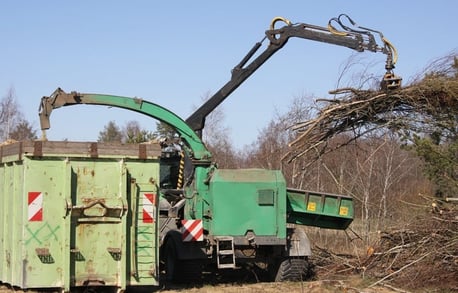
Biomass can be harvested in such a way that allows timberland owners to improve profitability and preserve their forests. Many states — especially those with mature biomass energy markets — have adopted or begun developing biomass harvesting guidelines. From Washington state to Alabama and Maine to California, states with significant forest resources have begun taking a serious look at what best practices should be in place to ensure sustainability.

The Forestry Guild, a professional organization of forest stewards and natural resource professionals who are passionate about restoring and sustaining forests while meeting the needs of the communities that rely on them, recently published "Biomass Retention and Harvesting for the Northeast." Though these guidelines will only apply to the Northeast, they do provide a model for the types of issues that should be considered on a region by region, state by state, and sometimes tract by tract basis.
Since the meaning varies dramatically among sources and states, most published guidelines begin with a clear definition of biomass. the Forestry Guild defines biomass as “vegetation removed from the forest, usually logging slash, small-diameter trees, tops, limbs, or trees not considered merchantable in traditional markets." The Guild has also defines a sustainability goal that consists of balancing “the needs of the present” with “the ability of future generations to meet their needs.”
In general, guidelines for harvesting biomass are the same as those for sawtimber and pulpwood harvests. Because material that would have been left on the forest floor would be removed during biomass harvest, however, some additional guidelines will ensure forest health:
- Avoid Re-Entry: Integrate biomass harvesting with other forest operations to prevent negative site impacts such as soil compaction and disruption of post-harvest regeneration.
- Protect Soil Quality: Avoid low-nutrient sites; on other sites, retain 15-33 percent of tops and limbs, depending on the intensity of harvests; retain and scatter woody material of a variety of sizes across the tract; minimize removal of needles and leaves.
- Retain Habitat for Wildlife and Biodiversity: Leave litter, roots, stumps and downed woody material; leave an appropriate number of live cavity, den trees, live decaying trees and snags.
- Protect Rare Forests and Species: Restrict biomass harvests in old growth or imperiled forests types unless needed to perpetuate the type or reduce invasive species and wildfire risk.
As the science of forestry and society’s values concerning our forests have evolved, the forestry industry has been proactive in adopting best practices for managing forests and harvesting timber. Unlike coal mining and oil drilling, where the longevity of the industry is determined solely by how quickly the fossil fuels are being depleted, the longevity of the forestry industry depends upon the renewability of forest resources. As a result, timber owners and buyers have strong and compelling incentives for managing and harvesting timber with a view toward the future. The introduction of a new market for logging slash will provide another opportunity for the industry to continue this work.


 Suz-Anne Kinney
Suz-Anne Kinney


